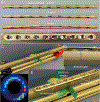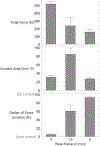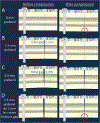Mechanics of dynamic compression plate application in fracture fixation
- PMID: 38401319
- PMCID: PMC11091841
- DOI: 10.1016/j.clinbiomech.2024.106209
Mechanics of dynamic compression plate application in fracture fixation
Abstract
Background: Dynamic compression plating is a fundamental type of bone fracture fixation used to generate interfragmentary compression. The goal of this study was to investigate the mechanics of the surgical application of these plates, specifically how plate prebend, screw location, fracture gap, and applied torque influence the resulting compressive pressures.
Methods: Synthetic bones with transverse fractures were fixed with locking compression plates. One side of the fracture was fixed with locking screws. On the other side of the fracture, a nonlocking screw was inserted eccentrically to induce interfragmentary compression. A pressure mapping sensor within the fracture gap was used to record the resulting pressure distribution. Plate prebends of 0 mm, 1.5 mm, and 3 mm were tested. Three locations of the eccentric screw, four levels of screw torque, and two initial fracture gap conditions also were tested.
Findings: With increasing plate prebend, fracture compression pressures shifted significantly toward the far cortex; however, compression force decreased (P < 0.05). The 1.5 mm prebend plate resulted in the greatest contact area. Increasing screw torque generally resulted in greater fracture compression force. The introduction of a 1 mm fracture gap at the far cortex prior to dynamic compression resulted in little or no fracture compression.
Interpretation: The model showed that increasing plate prebend results in an increasing shift of fracture compression pressures toward the far cortex; however, this is accompanied by decreases in compressive force. Initial fracture gaps at the far cortex can result in little or no compression.
Keywords: Dynamic compression plate; Eccentric screw; Fracture compression; Plate prebend.
Copyright © 2023. Published by Elsevier Ltd.
Conflict of interest statement
Declaration of competing interest J.S. Reid is a product development consultant with Depuy Synthes, a product development consultant with Osteocentric, and a stockholder with ROMtech. G.S. Lewis is a co-investigator on research funded by Arthrex Inc. For the remaining authors no conflicts are declared.
Figures





References
-
- Müller ME, Allgöwer M, Schneider R, Willenegger H. Manual of internal fixation : Techniques recommended by the ao-asif group. 3rd edition. Berlin/Heidelberg: Springer-Verlag; 1995.
-
- Ruedi TP, Buckley RE, Moran CG. AO principles of fracture management. 2nd edition. Thieme; 2007.
Publication types
MeSH terms
Grants and funding
LinkOut - more resources
Full Text Sources
Medical
Miscellaneous

